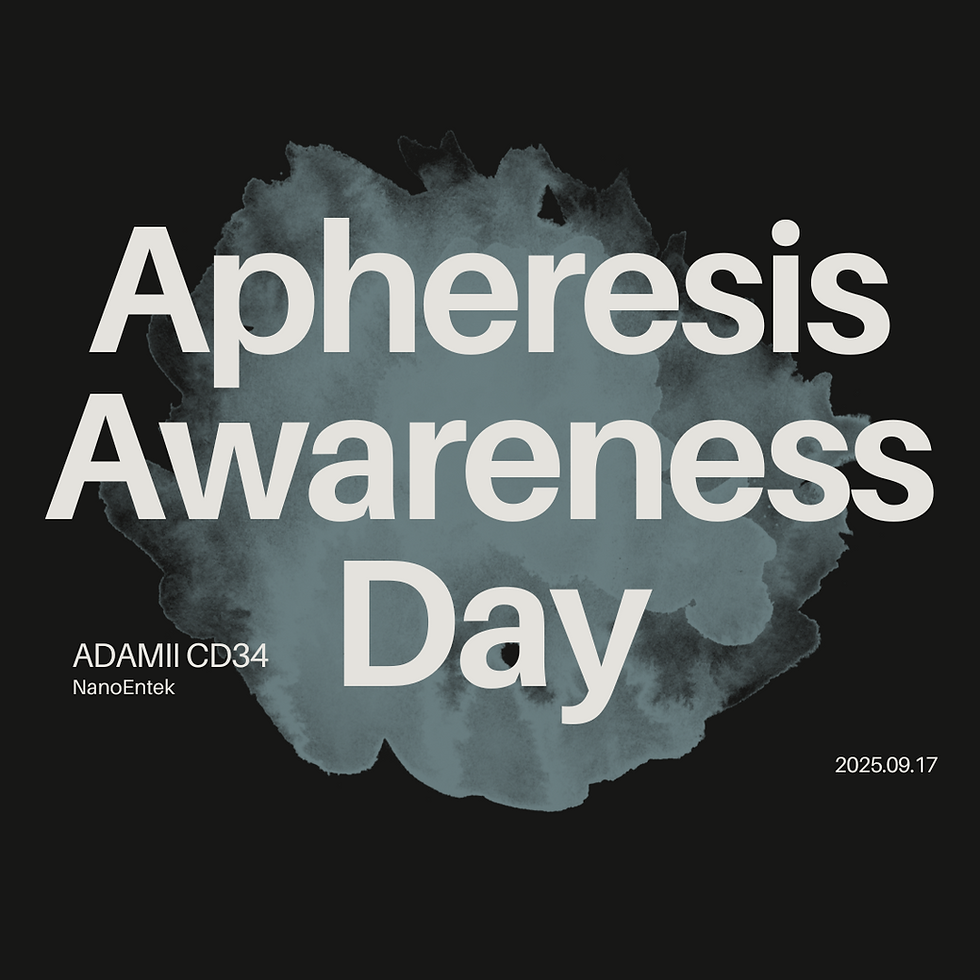What are the crucial variables for upholding the quality of blood specimens?
- NanoEntek

- Jun 20, 2023
- 2 min read
The importance of elimination of leukocyte
The residual leukocytes in a blood component can cause adverse reactions such as febrile non-hemolytic transfusion reactions, alloimmunization, and transfusion-associated graft-versus-host disease. Therefore, it is essential to reduce the number of leukocytes in blood products by using effective methods such as filtration or centrifugation
However, these methods are not perfect and may leave some leukocytes behind. This is why it is important to monitor the level of leukocyte reduction by using reliable and sensitive tests that can detect the presence and quantity of leukocytes in blood products.
There are several parameters to maintain the good quality of blood products to save millions lives.
The number of leukocytes in the leukoreduced sample

Leukoreduction is the removal of white blood cells (or leukocytes) from blood products such as red blood cells, platelets, or plasma. The maximum leukocyte level after leukoreduction depends on the method and the product type, but generally it should be less than 5 × 10^6 leukocytes per unit with 95% confidence. This means that more than 90% of leukoreduced products should have less than 1 × 10^6 leukocytes per unit and more than 99% of products should have less than 5 × 10^6 leukocytes per unit.
Recommendations for leucodepleted samples
According to the FDA guidance document for pre-storage leukocyte reduction of whole blood and blood components intended for transfusion, the standard or recommended sampling plan for leucodepleted samples for the monthly production is as follows:
For each product type (e.g., red blood cells, platelets, plasma), you should test at least 1% of the monthly production or a minimum of four units per month, whichever is greater.
You should test each unit using a method that can detect less than 5 × 10^6 leucocytes per unit with 95% confidence.
You should maintain records of the test results and monitor them using statistical process control methods.
You should report any failures to meet the leukocyte reduction specifications to FDA as a biological product deviation.
Appropriate selection for quality control on Blood Products
Selecting an appropriate method for analyzing samples requires careful consideration of accuracy, reliability, and efficiency.
Manual counting takes between 7 to 10 minutes, while flow cytometry takes 4 to 5 minutes for a single sample. The manual counting lacks FDA approval and heavily depends on the user, while the accuracy of flow cytometry results can be contingent on the user's gating criteria, and the machine requires high maintenance costs.

Imaging assay techniques which widely used for the quality control of the blood products, on the other hand, produce results in less than a minute, exhibit comparable accuracy to flow cytometry, and are FDA approved. The imaging assay machine is compact, making it both easy to use and store. The choice depends on the end-user what system they use to maintain the good quality product.
Takeaway message
In conclusion, reducing leukocytes in blood products is essential to prevent adverse reactions. Testing should be done to ensure the level of reduction is adequate and follow FDA guidelines. By maintaining the quality of blood products, we can save countless lives through safe transfusion practices.
Reference
[ADAM rWBC2]
Residual Leukocyte Counter
[ADAM rWBC HT]
Residual White Blood Cell Counter







Comments